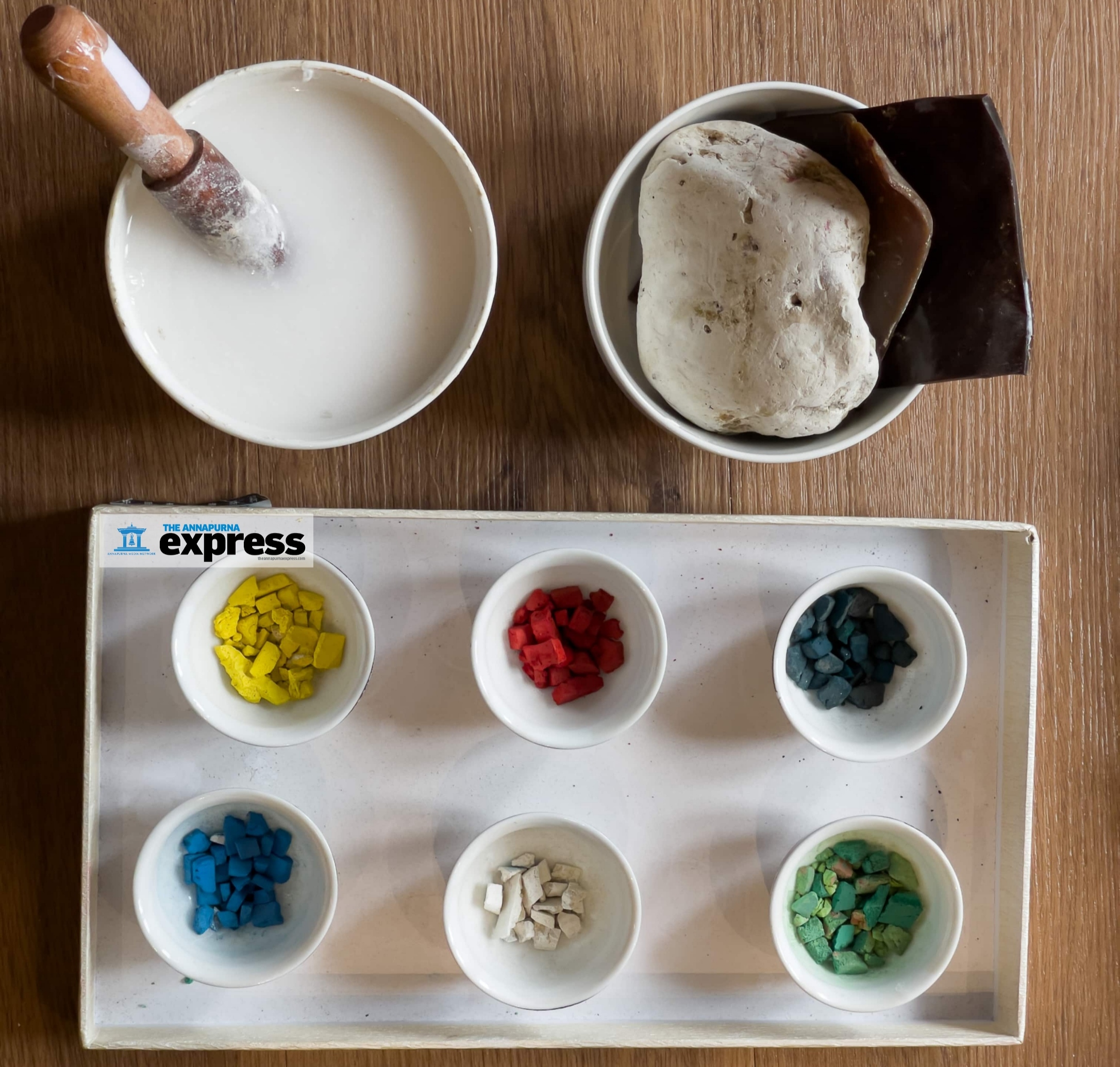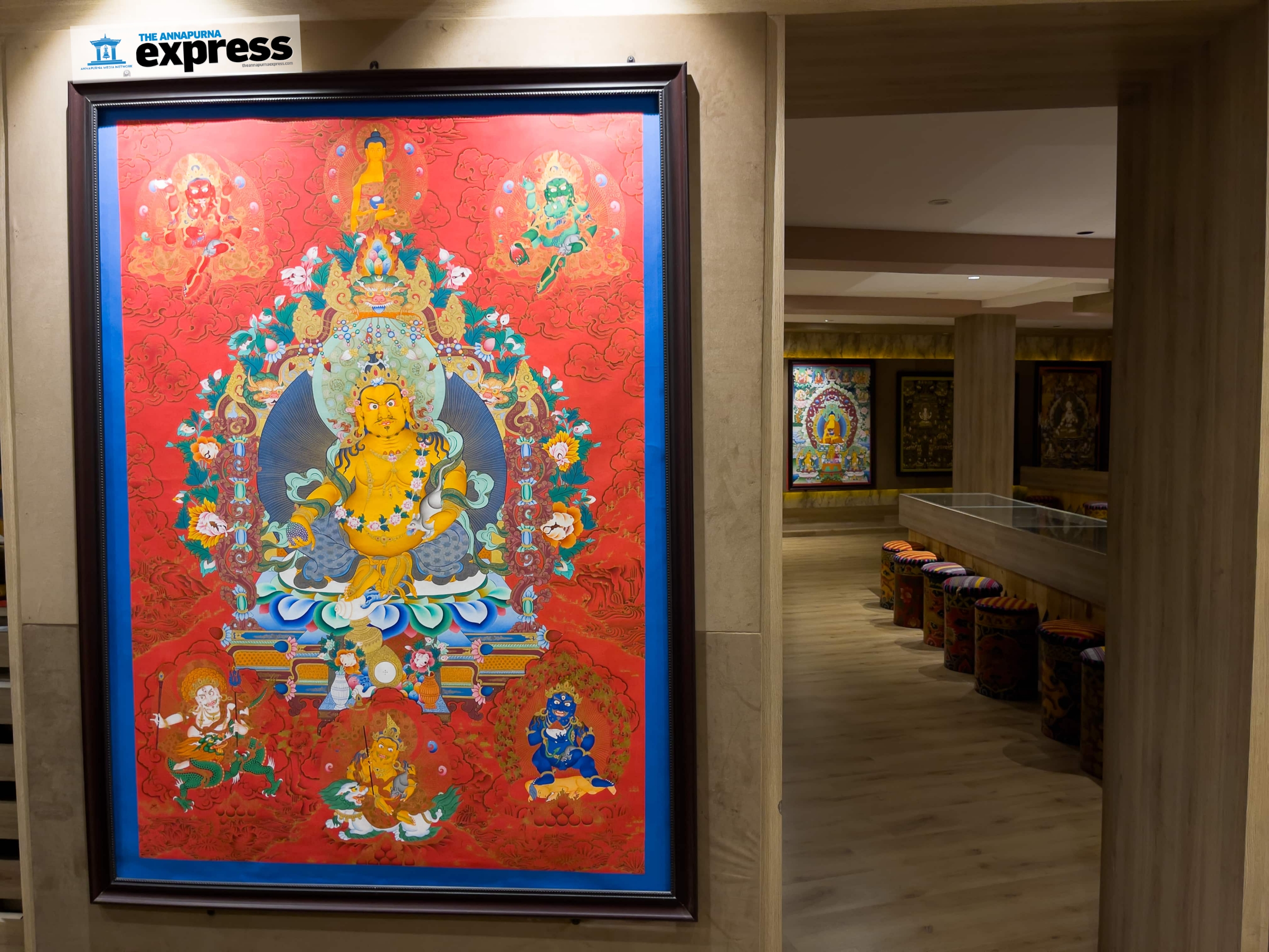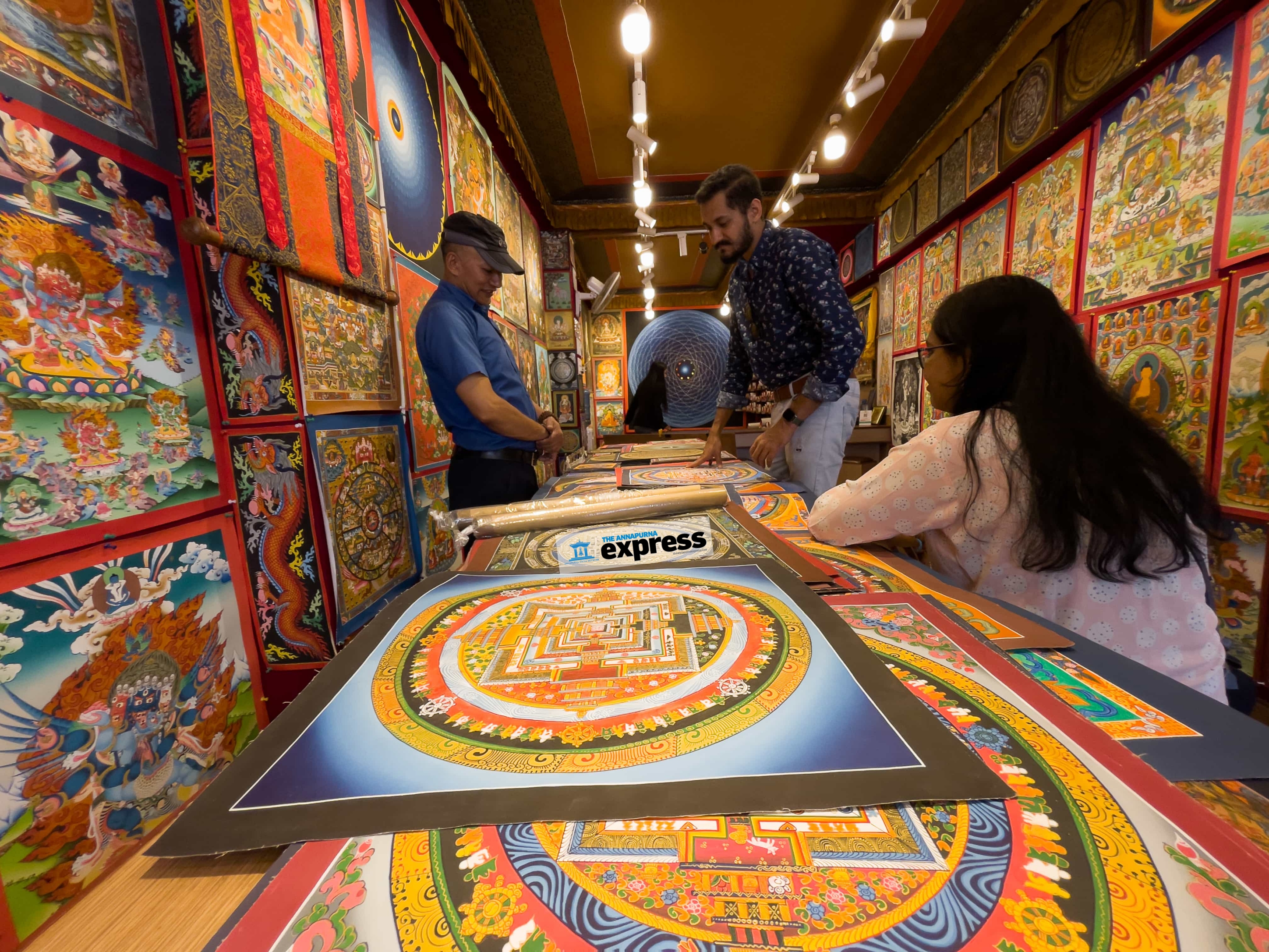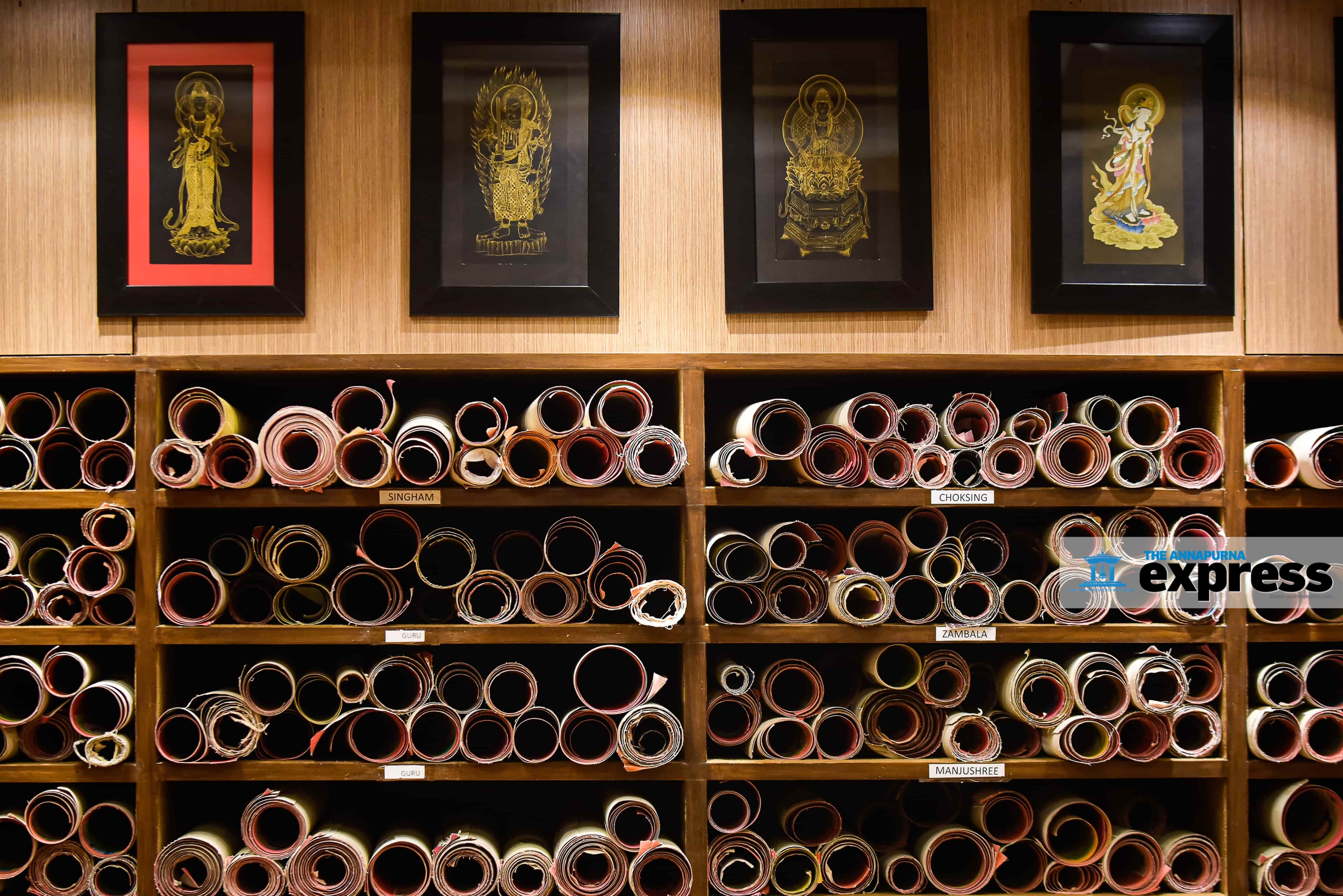Thangka painting is a niche field of art that requires years of training and oodles of patience. The painting itself is exquisite, vivid and full of intricate details, often depicting the life of Buddha and aspects of Buddhism. Considered sacred by the Buddhist faithful, they are more than art-pieces. This week, I visited a thangka gallery at Kathmandu’s Boudha to see what goes into making these artworks. The gallery owner was kind enough to oblige me.

He works with a small cohort of master artists, who make thangkas of all shapes and sizes for him. The gallery walls are adorned by the works of these masters. One of the thangkas by artist Man Bahadur Lama was priced at Rs 10m.

“The price of a painting is determined based on the details, the time it takes to complete the piece, and the artist behind it,” says the gallery owner. The process of painting itself is a demanding task. Master artists are required to go through many ancient books and follow several specific steps to create the intricate thangka patterns.

The gallery also runs a store where thangkas paintings are sold. Here, the cheapest painting is priced at Rs 25,000. The person managing the store says most customers are foreigners, the majority of them Chinese Buddhists.

“Thangkas are generally expensive also because they require special canvas and highly durable colors,” the store manager says.
To make his point, he guides me to a corner of the store where hundreds of thangkas are kept, each one rolled up like a parchment.

I learned that a well-made surface (canvas) is all it takes for a thangka to last for centuries. The canvas is woven out of cotton thread on a wooden frame. Once the canvas is ready, a special concoction (jesso) is applied on the surface to retain the colors applied by the artist. The colors used in the thangka paintings are specially brought from the Himalayas, as they are believed to be indelible. Twenty-four karat gold dust is also used in thangka painting.
“The fact that thangkas can be rolled up make them convenient for transport and storage. The painting won’t be damaged unless you expose it to the elements for long or treat it roughly,” says the store manager.











